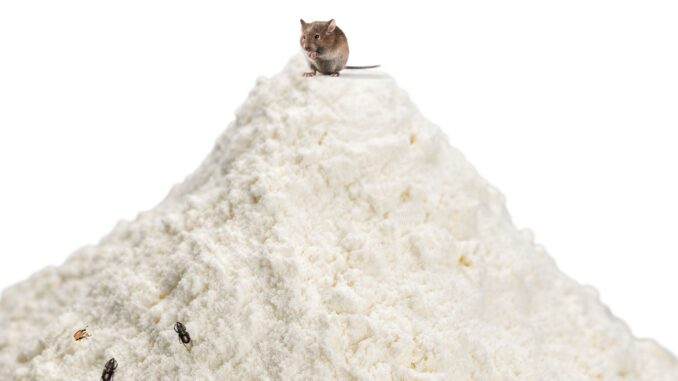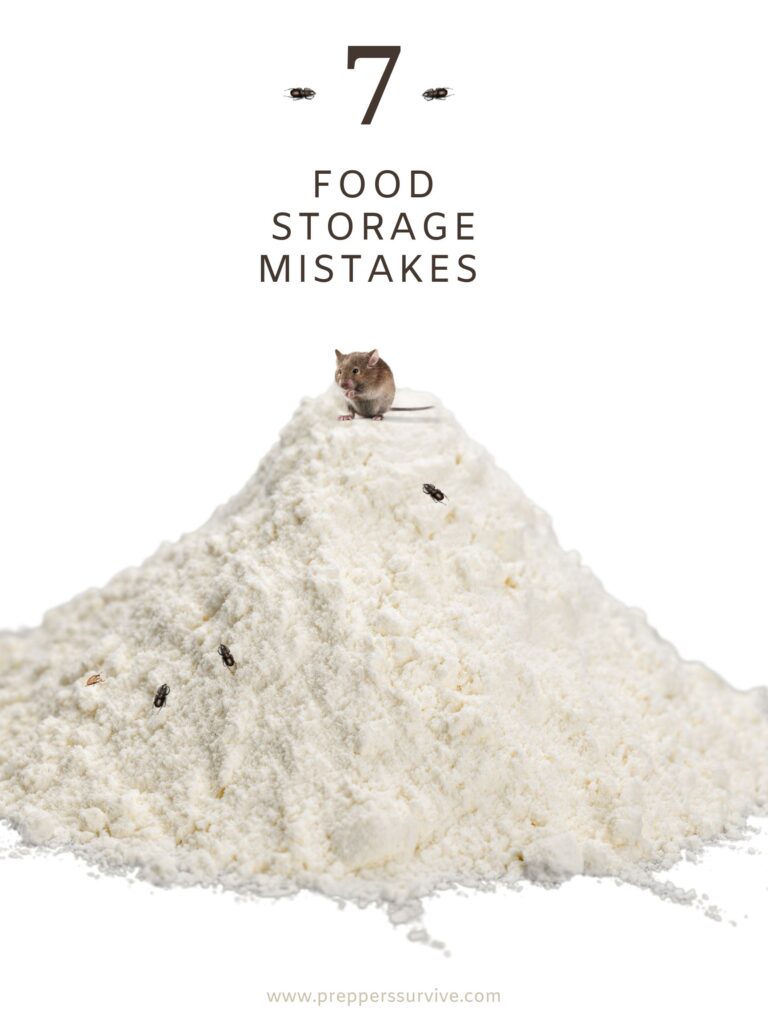
Having food storage is a crucial way preppers prepare. People have been doing it for centuries, as our ancestors needed enough supplies to last the cold winters despite no electricity or other convenient appliances. A prepper’s pantry has become more manageable with modern conveniences, but bad weather, disasters, and pests can put food storage at risk. Is your pantry up to the task? People often make these seven food storage mistakes. Here’s how to mitigate them.
7 Food Storage Mistakes
- Wrong Containers
One of the fundamental parts of storing food is using suitable containers. Proper containers protect food from pests, light, smells, and moisture. The vessels you choose will go a long way in preserving food to give it a longer shelf-life.
It is a common food storage mistake to leave dry foods such as beans, rice, pasta, and breakfast grains in the initial packaging. However, initial packaging is only suitable for short-term storage because air gets sealed in with the food or is not sealed at all. Also, plastic food packaging is thin, can become brittle over time, making it easy to puncture. The risk is that your food storage can become stale or infested with bugs.
The best way to avoid this issue is to use airtight storage containers such as food-grade buckets, mylar bags, or glass jars, then add oxygen absorbers and a tight seal. Many preppers prefer mylar bags because you can visibly see if it is airtight when adding an oxygen absorber.
2. Improper Humidity
One thing people overlook when storing food long-term is humidity. Moisture in the air can negatively affect the foods in your pantry when it is not stored correctly. Damp air can cause foods to grow bacteria, mold, and rust canned goods.
Depending on where you live, moisture can be a significant issue for a prepper pantry. States on the East Coast, such as Florida, see high humidity levels all year. Dehumidifiers and moisture absorbers are great tools for reducing the air’s moisture. A hygrometer humidity gauge can help you determine if vigilance is needed to eliminate excess moisture in the air and is relatively inexpensive.
3. Too Much Light
Light is another factor you’ll want to consider for your food storage room. The amount of light entering your pantry can harm the food, especially if it’s direct sunlight. You may notice a warning label on your jars to keep them out of the sun in your home. Like humidity, sunlight hitting food provides better conditions for bacteria to grow. Think of E. coli, salmonella and other bacteria.
If your storage room has a window, consider getting a blackout curtain to deflect the sun’s rays and extend the shelf life of your food.
4. Fluctuating or High Temperatures
These food storage mistakes can easily be fixed. Another factor people need to correct is not considering the right temperature for storing food. Some people have food storage in the garage, where temperatures fluctuate drastically. The photos for an article I wrote called 8 Signs Canned Food Has Gone Bad, came from food that was stored in a garage.
I’ve also seen pantry cabinets near the fridge, oven, or stove. All these appliances emit heat, leading to quicker spoiling of your food. Sunlight can also rise temps diminishing the shelf-life of your food storage. Generally, your food needs to stay in dark, cool, and dry places.
Picking the right room in your home can go a long way in preserving your food. Optimally, dry food should be kept around 50 Fahrenheit for maximum shelf life. So, basements can be an ideal place for storing food. If you can’t set the pantry’s temperature that low, aim for a minimum of 70 degrees F. There are free Room Temperature Thermometer apps you can download on a smartphone to help determine which room in your home is the best suited for your prepper pantry.
5. Pest Infiltration
Depending on where you live, multiple pests can harm your food. Rodents such as mice can wreak havoc in a food pantry. Bugs can deteriorate the quality of your stored foods. The most common culprits are weevils, beetles, moths, and ants. To mitigate the pests:
- Secure your home’s entry points and consider using a pest removal service if needed.
- Store food in an oxygen-free environment using oxygen absorbers in airtight food store containers to kill bugs. Note: Putting flour in the freeze can also kill bugs, but it needs to be stored in a moisture-proof container.
- Use large airtight buckets or food storage bins to secure food from mice.
- Remember, crumbs in your pantry are like advertising to the rodent and insect community, “Hey, I keep food here!” So, never open food in your pantry. Instead, move the container to the kitchen before opening it. Let’s continue reading up on food storage mistakes.
6. Not Enough Water or Food Storage
Water plays a significant part in food storage. It’s one of the basics you need for many things in emergencies, and it’s not just for drinking. Water storage is commonplace for preppers, but some people fail to realize how much water they need. The average man needs almost four liters of water daily, and women need about three liters. That’s just for drinking.
Bad weather can cause water pipes to break. Hurricanes and wildfires can disrupt public utilities for weeks after. And droughts in the United States are becoming more troublesome in recent years. You need water for bathing, washing clothes and dishes, cooking, and hydrating. Start by getting at least 1 gallon of water a day for every household member. How much food storage do you need? Here’s a guide to help you determine what’s right for your family: Food Store Checklist
7. Food Waste
Letting food go bad can be frustrating because it feels like money going into the trash can. The hard part is finding the balance between storing short-term and long-term food storage. You’ll know when you have too much short-term food because you can’t rotate through it quickly enough. Technically, you can eat food past its expiration date. However, you may encounter problems where the food loses its color or normal texture, making it less tasty.
Food spoiling can be a frustrating experience, but it’s something you’ll get better at with experience. You can stay ahead of the game by using these nine food storage tips to get the most out of your time and money.
We are so glad you are here reading this Preppers Survive article! Before you leave, subscribe to our newsletter. If you have a moment, please share this article, 7 Food Storage Mistakes, on your favorite social media.



Leave a Reply